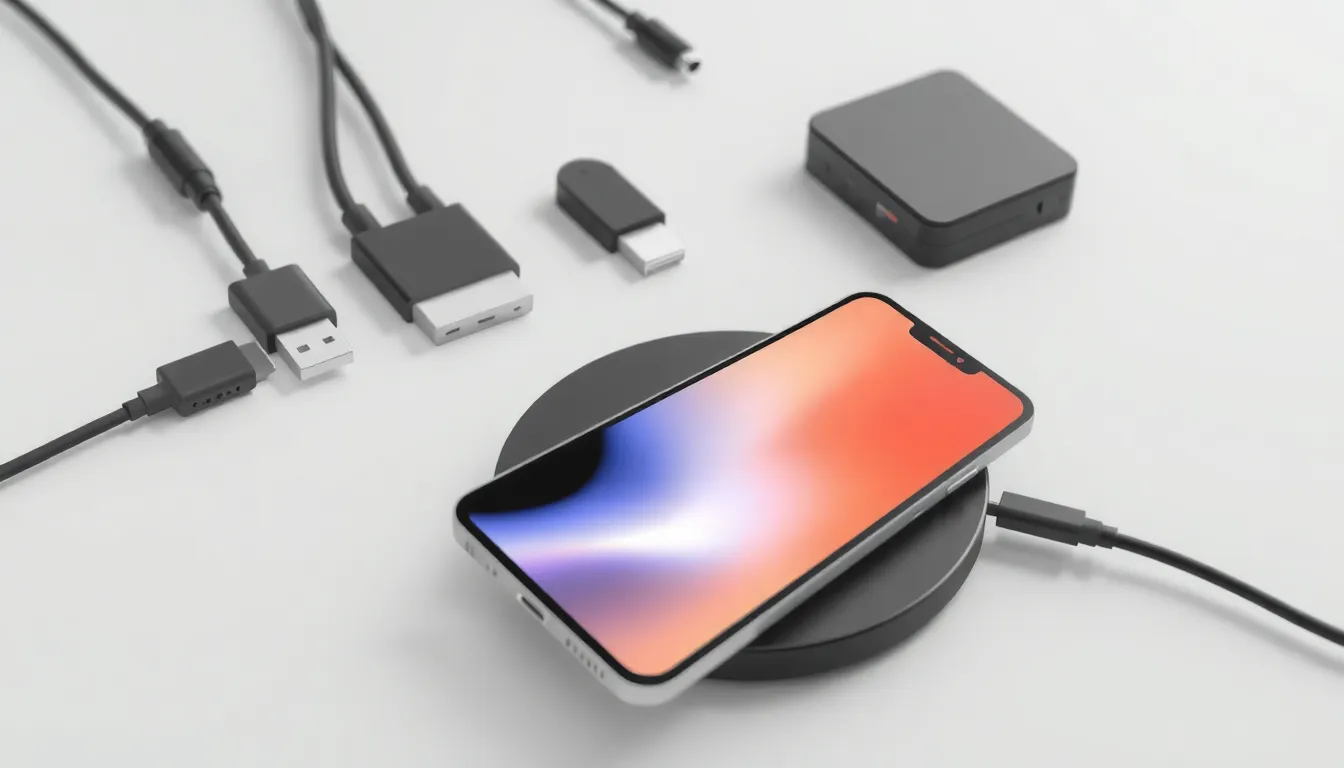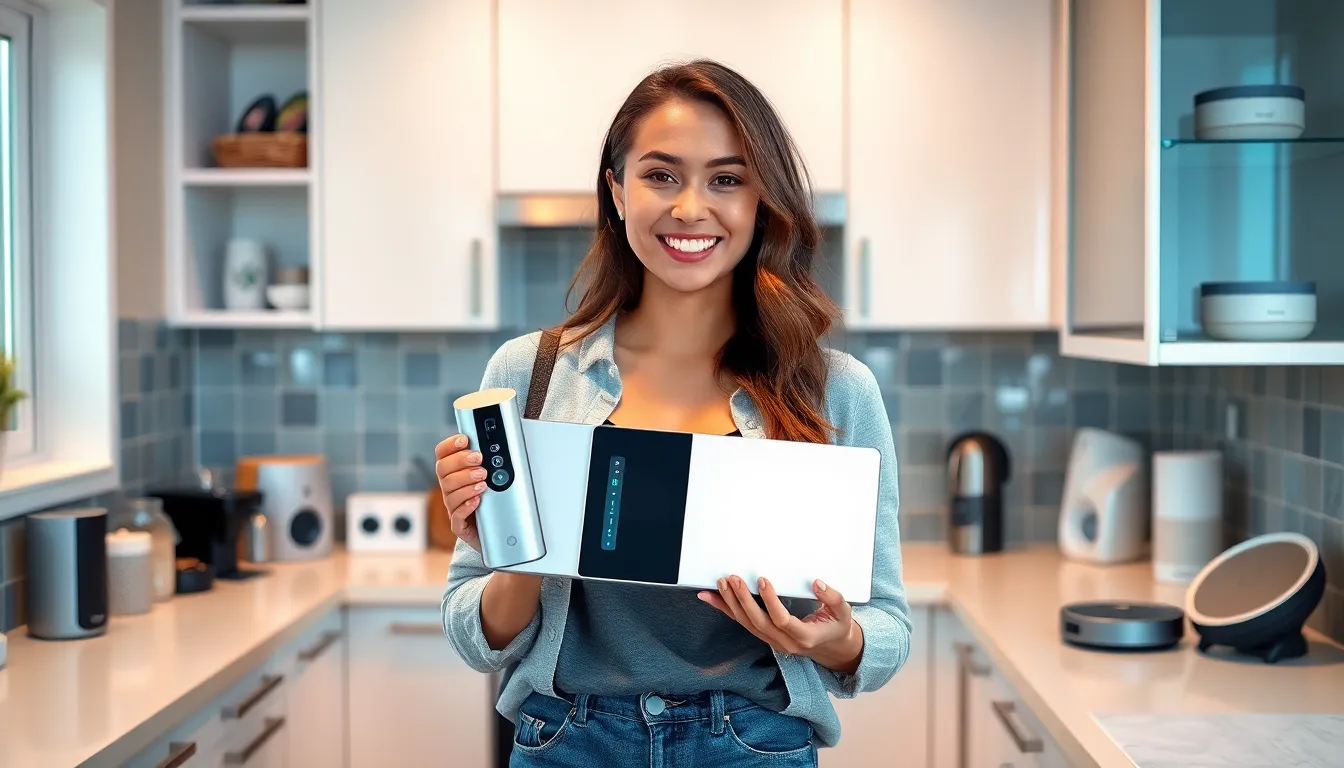In a world where smartphones are practically an extension of ourselves, phone chargers have become the unsung heroes of modern life. They quietly power our devices, ensuring we stay connected, entertained, and occasionally distracted by cat videos. But let’s be honest: not all chargers are created equal. Some are as reliable as a friend who always cancels plans at the last minute, while others are the dependable sidekicks we can’t live without.
Table of Contents
ToggleOverview of Phone Chargers
Phone chargers serve a crucial function, allowing users to power their devices efficiently. Many types exist, including wall chargers, car chargers, and wireless options. Wall chargers provide the most reliable charging experience, typically delivering higher wattages. Car chargers offer convenience while on the move, connecting directly to vehicle power sources.
Charging cables also vary in type and quality. USB-C cables, for instance, support faster charging and data transfer. Lightning cables cater to Apple devices, enhancing compatibility and efficiency. Micro USB cables, while older, still remain common for many devices. Each cable type influences charging speed and reliability.
Charging speeds differ across various devices. Standard chargers might offer 5 watts, while fast chargers can provide up to 100 watts. Manufacturers label devices with their optimal charging specs, making it easier for users to choose compatible chargers. Performance relies on elements like voltage and current, which ensure devices charge without damage.
Environmental factors can impact charger performance. Excessive heat during charging can decrease battery lifespan. Choosing quality chargers can mitigate risks associated with overheating. Additionally, investing in certified chargers enhances safety and.
Regular maintenance of chargers contributes to longevity. Keeping connection points clean enhances performance. Storage in dry, cool locations prevents wear and tear. Recognizing visible damage early on can also prevent issues down the line.
Awareness of emerging technologies ensures users stay informed. Innovations like solar chargers and fast charging protocols continue to evolve. Opting for sustainable options aligns with modern environmental values. Each charger type supports modern connectivity, significantly impacting daily digital routines.
Types of Phone Chargers

Phone chargers come in various types, each catering to different needs and preferences. Understanding these options helps users make informed choices.
Wired Chargers
Wired chargers remain the most common option for powering devices. These chargers typically use USB cables, which connect directly to the phone. Common types include USB-C, Lightning, and Micro USB. Charging speeds with wired chargers can range from 5 watts for standard chargers to 100 watts for fast chargers. Additional benefits of wired chargers include their reliability and widespread availability. They often provide a stable connection, allowing for quick recharges. Using the correct cable type ensures optimal charging performance.
Wireless Chargers
Wireless chargers offer a convenient, cable-free charging solution. Convenience is a key benefit, as users simply place their phones on a charging pad. Most wireless chargers adhere to the Qi standard, ensuring compatibility with numerous devices. Charging speeds for wireless options vary, typically ranging from 5 watts to 15 watts. Users enjoy the freedom of not dealing with tangled cords. However, charging efficiency can be less than wired options, often dependent on device placement. Emerging technologies, such as fast wireless charging, enhance the experience, making it increasingly popular among users.
Features to Consider
Assessing phone chargers involves attentiveness to several key features, including charging speed and compatibility.
Charging Speed
Charging speed significantly impacts device performance. Standard chargers, often rated at 5 watts, serve basic needs. Fast chargers, however, can reach up to 100 watts, ensuring rapid power delivery. Many manufacturers specify optimal charging values on devices for guidance. Devices that support fast charging benefit from technology designed to expedite energy transfer, reducing downtime. Understanding a charger’s capabilities helps users select the most efficient option for their devices. Excessive heat can hinder charging performance, so prioritizing quality chargers is vital.
Compatibility
Compatibility plays an essential role in charger selection. Different devices utilize various ports, including USB-C, Lightning, and Micro USB. Ensuring a charger works seamlessly with specific devices avoids potential charging failures. Many modern chargers offer universal compatibility, accommodating multiple devices. Using original or certified chargers guarantees safety and efficiency, which is particularly crucial for fast charging features. Users should consider future-proofing their purchases by opting for chargers with broad compatibility and adaptability.
Best Phone Chargers on the Market
Choose the right phone charger to ensure optimal performance and reliability. Here are some of the best options available today.
Budget Options
Many budget-friendly chargers deliver good performance without breaking the bank. Anker PowerPort III Mini provides 18 watts of power in a compact design, perfect for everyday charging needs. Aukey’s 20W USB-C Wall Charger offers fast charging for various devices at an accessible price point. These options often feature essential safety mechanisms, ensuring user protection during charging. Users can also explore options like the RAVPower 30W USB-C Charger, which balances cost and efficiency for those seeking affordability without sacrificing quality. Selecting these chargers ensures value without compromising performance.
Premium Options
Investing in premium chargers guarantees enhanced performance and durability. The Anker Nano II 65W Power Adapter stands out with GaN technology, enabling rapid charging capabilities for laptops and smartphones alike. Apple’s 20W USB-C Power Adapter provides seamless compatibility with Apple devices, delivering optimal speed and safety. With stylish designs and high-quality materials, brands like Spigen offer wireless chargers that are not only functional but also aesthetically pleasing. When considering durability, the Belkin Boost Up Wireless Charging Pad ranks high, combining reliability with convenience. These premium choices ensure fast, efficient charging across various modern devices.
Maintenance and Care for Phone Chargers
Regular maintenance enhances the longevity of phone chargers. Keeping connection points clean promotes efficient charging. Dust and debris can accumulate, obstructing power transfer. A soft cloth suffices for wiping connectors and ports.
Proper storage is vital for maintaining charger integrity. Coiling cables loosely prevents kinks and fraying. Avoid tight bends when storing, as inconsistent pressure damages wires. Designating a specific spot for chargers avoids misplacement and wear.
Temperature control affects charger performance and battery health. Excessive heat during charging can degrade internal components. Users should ensure chargers remain in cool, dry locations during use. Direct exposure to sunlight or heat sources should be avoided.
Periodic inspections help identify potential issues. Frayed wires or damaged connectors indicate a need for replacement. Users should regularly check for signs of wear and tear. If issues arise, replacing chargers promptly ensures device safety.
Compatibility with devices is also essential. Using original or certified chargers prevents damage from inadequate voltage. Manufacturers recommend specific chargers for optimal performance. Users must be cautious with third-party options, as poor quality can lead to decreased efficiency.
Understanding charging protocols enhances overall user experience. Different devices benefit from varying charging speeds. Fast chargers, for instance, meet the needs of high-performance devices. Staying informed about charging technology helps users select the best options for their needs.
Emerging trends, like solar chargers, represent evolving technology. These options align with sustainability goals while providing convenient solutions. Embracing innovative charging methods can enhance daily connectivity and contribute to a greener environment.
Choosing the right phone charger is essential for ensuring devices stay powered and ready for use. With various options available users can find chargers that meet their specific needs while considering factors like charging speed and compatibility. Investing in quality chargers not only enhances device performance but also contributes to longer battery life.
Regular maintenance and awareness of emerging technologies can further improve the charging experience. By opting for reliable and sustainable choices users can align their charging habits with modern values while enjoying the convenience of staying connected. Prioritizing quality over quantity will lead to a more efficient and satisfying digital lifestyle.



